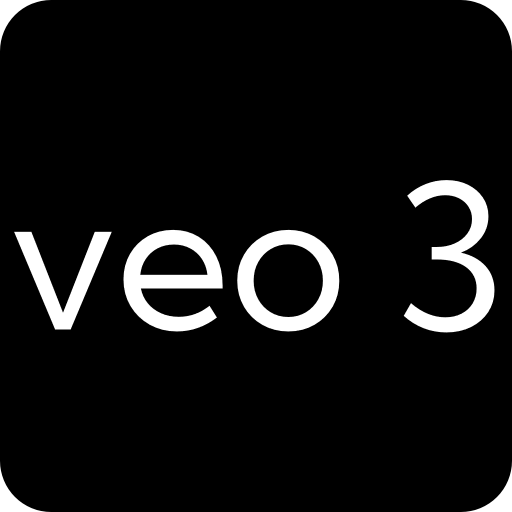How to Use Google Veo 3: Features, Access Methods, and Practical Tips

Try Google Veo 3 on AiGoGen
Exciting news! We've integrated Google Veo 3 into our platform. Create high-quality AI videos with our simplified access:
Note: Login and credits required to generate videos. Sign up for an account to get started.
What Makes Veo 3 Special
Google recently unveiled its latest AI video generation model, Veo 3, at the Google I/O conference. This tool has garnered widespread attention thanks to several breakthrough features:
- Native Audio Generation: For the first time, it achieves synchronized sound effects, ambient noise, and character dialogue with impressive lip-syncing capabilities
- Enhanced Realism: Significantly improved physics modeling and scene consistency compared to previous versions
- Text Generation Capabilities: Seamlessly incorporates text elements within generated videos
- Complex Prompt Understanding: Excels at interpreting detailed narrative prompts and translating them into cohesive visual stories
- Professional Integration: Available through Google Flow, a new AI filmmaking interface designed for content creators
Note: Currently, Veo 3 is primarily available to US users and requires a Google AI Ultra plan (approximately $250/month) for full access.
Free Methods to Access Veo 3
While Google has positioned Veo 3 as a premium offering, there are several legitimate ways to experience this technology for free or at a low cost:
1. Google Cloud $300 Credit Program
The most straightforward legitimate method is to leverage Google Cloud's free credit for new users:
- Sign up for Google Cloud: New users receive $300 in free credits valid for 90 days
- Access via Vertex AI: Veo 3 is available through the Vertex AI API using the model ID
veo-3.0-generate-preview - Usage estimate: At approximately $0.35 per second of generated video, your $300 credit could produce around 14 minutes of content
Setup steps:
- Create a Google Cloud account at cloud.google.com
- Verify your identity (requires a credit card, but won't be charged during the trial period)
- Enable the Vertex AI API in your project
- Use the Veo 3 API endpoint for access
2. Educational Access Programs
Google offers special programs for students and educators:
- Student Initiative: Free access to Google AI Pro (including Veo 2) through 2026
- Educational Institutions: Some universities with Google research partnerships have negotiated Veo 3 access for academic projects
- Application Process: Visit edu.google.com/programs to check eligibility
3. Google AI Pro Free Trial
While not providing direct Veo 3 access, this option lets you experience Google's video generation ecosystem:
- One-month free trial of Google AI Pro ($19.99/month value)
- Includes access to:
- Veo 2 (previous generation model)
- Google Flow interface (same tool used with Veo 3)
- Gemini 2.5 Pro and other AI tools
Alternative Approaches and Hybrid Workflows
If direct access to Veo 3 isn't possible, consider these alternatives:
Hybrid Workflows
Strategically combine free tools to approximate Veo 3's capabilities:
- Use Google AI Pro trial (Veo 2) to generate base videos
- Add audio with open-source tools like AudioLDM or AudioGen
- Enhance quality with free video upscalers like Topaz Video AI (trial version)
Open-Source Alternatives
While not matching Veo 3's capabilities, these free options provide basic video generation abilities:
- Make-A-Video: Facebook's research model with limited public implementations
- Stable Video Diffusion: Stability AI's video generation model with community implementations
Best Practices for Using Veo 3
Prompt Writing Tips
- Detail the scene: Include environment, lighting, characters, actions, and camera angles
- Specify audio elements: Mention background music, ambient sounds, and dialogue
- Generate one output at a time: This saves credits and allows for targeted iterations
Important Considerations
Before using Veo 3, be aware of these limitations:
- Regional restrictions: Full functionality is currently limited to US users
- Content policies: Google prohibits generating certain types of content, including realistic human faces without additional approval
- Output limitations: Videos are currently limited to 5-8 seconds in length
- API quotas: Even with credits, there are daily usage limits
Conclusion
Google Veo 3 represents a significant milestone in AI video generation technology, offering creators unprecedented possibilities. While currently aimed primarily at premium users, more people can begin exploring this cutting-edge technology through Google Cloud credit programs, educational initiatives, and hybrid workflows.
As AI video technology continues to evolve, we can expect more accessible options to emerge. For now, strategic use of Google's credit systems and free trials provides the best balance of capability and cost-effectiveness for those looking to explore this cutting-edge technology without a significant financial commitment.
Whether you're creating personal projects or professional content, Veo 3 demonstrates that the creative possibilities of AI video generation are just beginning to unfold.